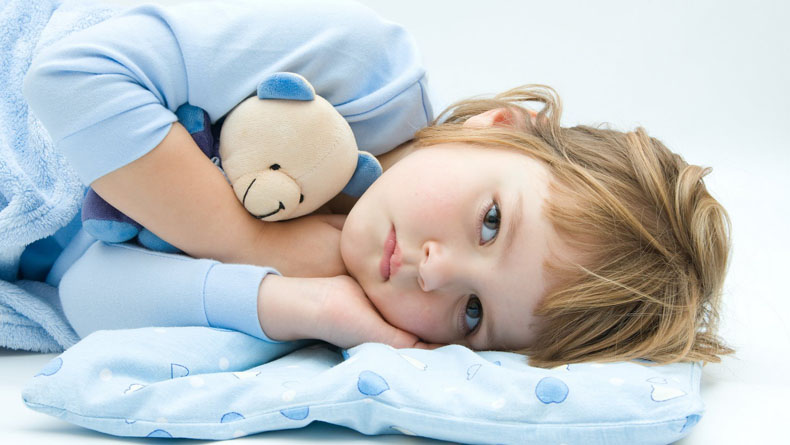What to Do When Your Child Has a Fever in Japan
Serious Concern or False Alarm?
You are just about to go to bed and you notice your child is flushed in the face. You put your hand on her forehead and realize she has a high temperature. You check again with a thermometer which reveals a fever of over 38 degrees Celsius. Panic immediately begins to set in: What do we do? We don’t speak Japanese! Should I take the child to the hospital? Should I give her medicine? Is Japanese medicine suitable for foreign kids?

If this has not already happened to you and your kids in Japan, the odds are it will at some stage. When one of my children had a high temperature shortly after we moved to Japan, I was at a loss and had no idea what to do or who to call. Educate yourself before the same thing happens to you, so when it does you’ll be prepared.
As a general rule, a temperature of over 37.5 degrees Celsius (99.5 degrees Fahrenheit) is considered a fever. Anything less is something that should probably be monitored, but doesn’t usually require immediate medical attention. Most people’s body temperatures change slightly even during the course of the day, usually being lower in the morning and a little higher in the evening. The body temperature can also fluctuate as kids run around, play and exercise.
A fever occurs when the body’s internal “thermostat” raises the body temperature above its normal level. This thermostat is found in the part of the brain called the hypothalamus. The hypothalamus knows what temperature your body should be (usually less than 37°C) and will send messages to your body to keep it that way.
Sometimes, though, the hypothalamus will “reset” the body to a higher temperature in response to an infection, illness, or some other cause. Why? Researchers believe turning up the heat is the body’s way of fighting the germs that cause infections, thus making the body a less comfortable place for them.
When your child shows signs of a fever, here are a few things you should do:
1. Check the exact temperature with a thermometer.
If it’s over 38°C, you should seek medical advice. Call your family doctor first, but if it’s after clinic hours, call the hospital’s emergency line. Most hospitals in Japan have basic English speakers available, but you may need to speak slowly and clearly to be understood. To resolve things as quickly and painlessly as possible, stay calm and keep a clear head.
2. Check the body for any abnormal rashes or spots.
If you find your child has a non-blanching rash (a rash that doesn’t fade when a glass is pressed firmly against the skin), this is a sign that your child has a more serious illness and it’s time to call an ambulance (dial 119).
3. Make sure your child is hydrated.
Perhaps your child was sweating a lot and did not replenish his water supply. Make sure your kids are drinking fluids. If they are not drinking, check for sore redness and swelling in the throat.
4. Make your child comfortable.
Your child only needs to wear underwear or a nappy, which will help the heat escape from the body. Make sure their room is ventilated and cool, but not drafty. Make sure they have plenty of rest and sleep.
When to call the doctor
Look at your child and use common sense. Does she look exhausted or ill? Is she behaving differently? If the answer is yes, call the doctor.
You should also call your doctor if:
- you have a young child, less than three months old, who runs any fever
- your child cries and cries, without you being able to comfort them, and doesn’t wake up easily
- your child has a temperature over 38ºC (101.3ºF) for more than three days
- your child has just had an operation
- your child doesn’t seem to be getting better.
If your child experiences any of the following symptoms along with a fever, call your doctor.
- Stiff neck
- Affected by bright light
- Hallucinations
- Red rash or blue or purple dots or patches
- Trouble breathing
- Cramps or leg pains
- Continued vomiting or diarrhea
- Tonsillitis
- Pain when urinating, or urinating more than usual
Dealing with Japanese Hospitals
I have had many experiences with Japanese emergency rooms with our children, particularly in the middle of the night. Most likely you will see an intern at first and if they discover a more serious symptom, they will consult or bring a doctor to check the child. Generally they will give you two medications: some sort of pain medication in either powder or liquid form, as well as a fever reducer.
Although it’s usually not a necessity for not-so-high temperatures, I find particularly for first time or new parents’ peace of mind that having a professional look at their child is worth a few hours of sleep loss. When in doubt, it doesn’t hurt to consult a doctor, and Japanese national health insurance makes a trip to the emergency room very affordable.
English is not necessarily spoken fluently in Japanese hospitals, but all doctors have to study the names of diseases, viruses, symptoms and medications in English, so if you can drop a lot of medical vernacular, the doctor should be able to understand. Most usually have a Japanese-English dictionary on hand as well. Some hospitals in central Tokyo, such as Sanno, Jikei and the Japanese Red Cross Medical Center have English-speaking staff available to help out when needed.
It is always a good idea to call the hospital before going, as they may be dealing with another more pressing emergency that would prevent them from looking at your child for several hours. In that case, someone can usually refer you to another hospital nearby that would be more likely to have availability.
For more information, check out the excellent Japan Healthcare Info website, which has all sorts of useful information on hospitals, doctors and common healthcare concerns, as well as some helpful Japanese phrases to know.












Leave a Reply